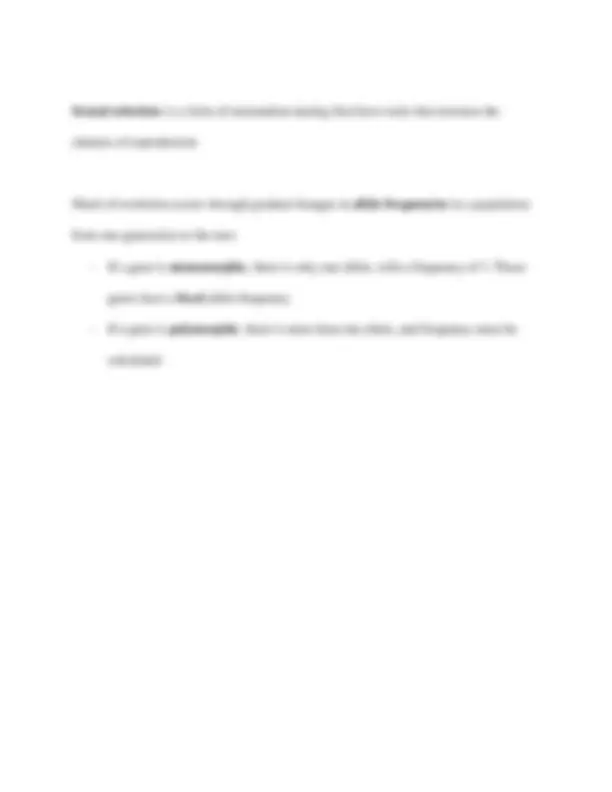



Study with the several resources on Docsity

Earn points by helping other students or get them with a premium plan


Prepare for your exams
Study with the several resources on Docsity

Earn points to download
Earn points by helping other students or get them with a premium plan
Community
Ask the community for help and clear up your study doubts
Discover the best universities in your country according to Docsity users
Free resources
Download our free guides on studying techniques, anxiety management strategies, and thesis advice from Docsity tutors
The concepts of genetic drift and nonrandom mating, their effects on allele frequencies in populations, and how they contribute to evolution. Genetic drift is a process that causes random changes in allele frequencies, particularly in small populations, leading to a reduction in genetic variation. Nonrandom mating, on the other hand, occurs when individuals choose mates based on specific phenotypes, resulting in changes in homozygote frequencies and the favoring of certain traits. The document also explains the difference between monomorphic and polymorphic genes and how genetic drift influences their frequencies.
What you will learn
Typology: Lecture notes
Uploaded on 05/31/2022
6 documents
1 / 2

This page cannot be seen from the preview
Don't miss anything!


Jan 26 Genetic Drift results from random changes in allele frequencies ● Very strong in small populations Population bottleneck: if a population is reduced to only a small number of individuals, genetic drift will reduce genetic variation in the population A colonizing population is unlikely to have all the alleles present in the whole population
Sexual selection: is a form of nonrandom mating that favor traits that increase the chances of reproduction Much of evolution occurs through gradual changes in allele frequencies in a population from one generation to the next